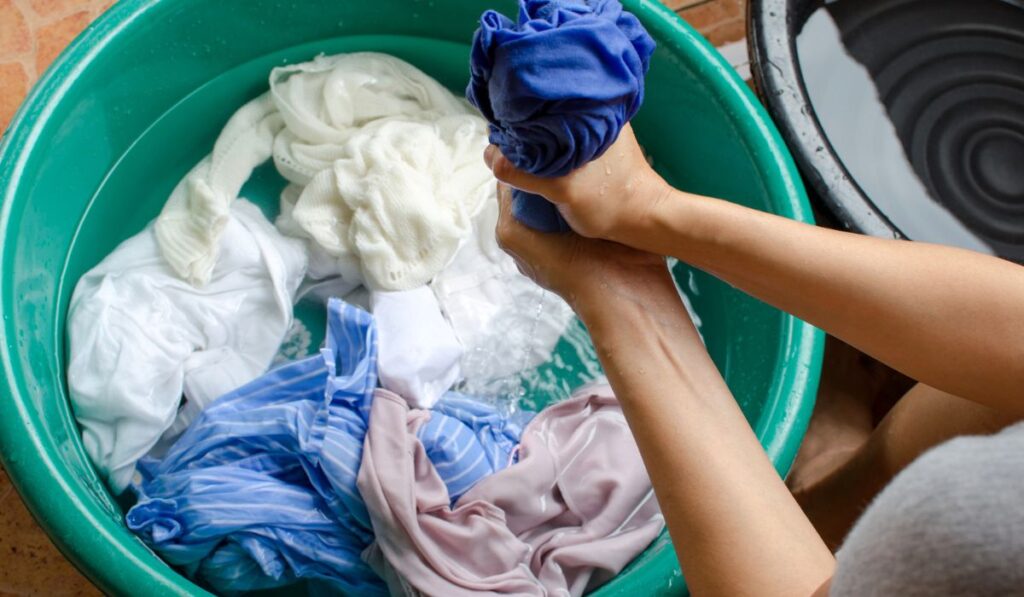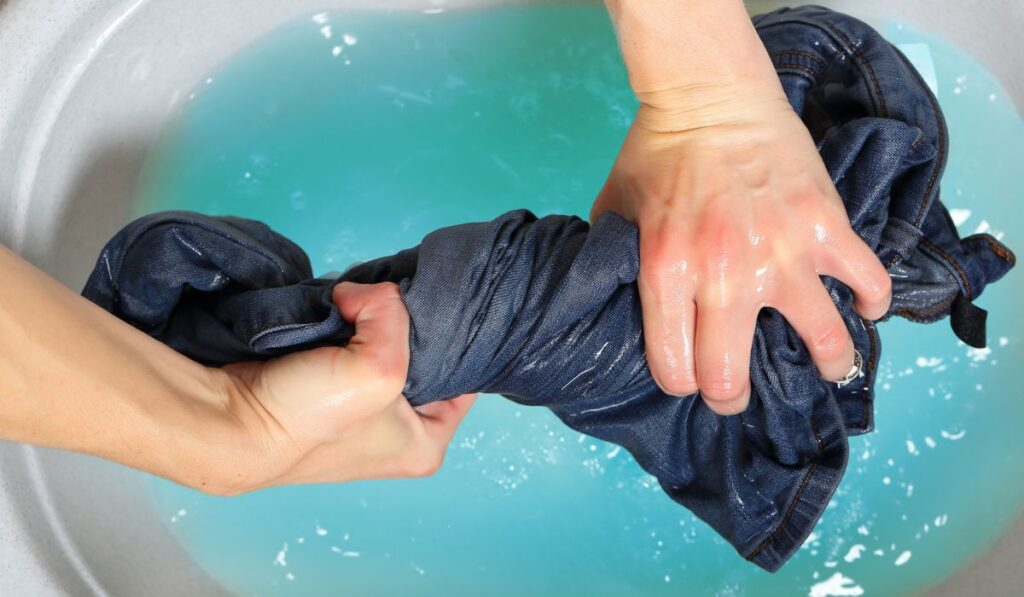You’ve just bought a new dream dress, so the next question is whether you can go ahead and wear it or wash it first before wearing it. This is a question that many people have asked, especially those concerned about their health.
New clothes need washing before being worn since they may have chemicals, particularly dyes and irritants, that might cause skin problems. Some may also contain bacteria that can cause infections—washing your clothes before wearing means getting rid of the chemicals and bacteria on them.
Read on to find out why you need to wash your clothes before wearing them, how to clean your jeans, and how to protect your clothes against fading.
Is it Necessary to Wash New Clothes Before Wearing Them?

Have you ever noticed that new clothes have a characteristic smell that may be unpleasant to your sense of smell? That alone is a good reason to wash them before wearing them, particularly the shorts, t-shirts, or underwear that directly touch your skin.
Bacteria Transfer
If you’re wearing second-hand clothes, there’s a possibility that the original wearer can transfer fungus, bacteria, scabies, or even lice to you via the clothes. This is also the case when you are trying on new clothes that have been tested by someone else.
Dressing rooms are the leading breeding grounds for all microorganisms, including viruses and bacteria. As a result, you can get all kinds of diseases, including athlete’s foot, by simply trying on clothes. That’s why it’s strongly advised that you wash all new clothes before wearing them.
Dye Transfer
New clothes have that characteristic smell from the excess dye and chemicals on the clothes. These chemicals can be transferred to other parts of your garments or body, causing your skin to react.
For example, fabrics made from acrylic, polyester, and other synthetic materials are colored using a dye called azo-aniline. Unfortunately, this dye has caused severe skin reactions in many people, most of whom are children, especially those allergic to this chemical.
Even as an adult, if you are allergic to azo-aniline or have sensitive skin, a new outfit may irritate your skin. Itchy rashes will appear on your skin if you have a severe allergy. However, even if the allergy is not severe, itchy, dry patches may appear on your skin.
Chemical Irritants
Another issue to be on the lookout for is chemical irritants. You must wash your new clothes to remove residual chemicals, including finishes like urea-formaldehyde. These chemicals are added to the clothes during manufacturing to reduce wrinkles and enhance texture.
These finishes may not bother you, but if your skin is sensitive, rashes may appear immediately after you put the clothes on, especially on high-contact areas like your thighs, waist, cuffs, collars, and armpits.
Urea-formaldehyde is typically added to clothes to prevent mildew when they are on long-distance transit. For example, humid containers from South America and Asia on transit to the US encourage mildew growth on clothes.
This chemical has a sharp smell that can remain on the clothes until they are washed. The chemical is so strong that a single wash will not remove it but significantly reduce the resin. As you continue washing it, the amount of urea-formaldehyde will diminish with each wash.
How to Wash Jeans

New jeans should also be washed before wearing them. When you wash jeans before wearing them, you’ll stop dyes and other chemicals from bleeding onto your other clothes and skin.
However, after the pre-wear clean, wash jeans only once in a while to maintain their color, shape, and fit. It’s recommended that you don’t wash jeans more than twice a month. And you can wash it after wearing it five to ten times.
Washing by Hand
Hand washing is the most preferred method of washing jeans. This is because the hands are more gentle with this material. Follow the steps below to wash your jeans.
- Fill a sink or bathtub with lukewarm or cold water.
- Add a teaspoon of gentle detergent to the water.
- Scrub the jeans gently to remove accumulated dirt over time, then soak them in water for about 45 minutes.
- Squeeze and rub the jeans gently for a few minutes, then use cold water to rinse them.
- Lay it flat to dry.
Washing Machine
It’s safe to wash your jeans in a washing machine, but you must use short, gentle cycles. Gentle washing is necessary to ensure the material maintains its appearance and color for as long as possible. Do not use hot water to wash the jeans; never dry them on high heat because doing so will shrink them.
Spot Cleaning
When spots stain your jeans, and you don’t have the time to wash them, you can deal with the individual stains. Then, depending on the nature of the stain, you can dip a piece of cloth in water or stain remover to get rid of the stain.
Unfortunately, spot cleaning will interfere with the overall look of your fabric. It leads to an uneven appearance and irregular wear. For example, the jeans may lose color in the spots where you cleaned the stains.
In addition, if you rub the stains hard, such areas will wear off and can get torn. That’s why experts advise that you should choose to wash the jeans or leave the stains to fade off on their own.
Dry Cleaning
Experts don’t recommend dry cleaning jeans. However, if the cleaning instruction specifies dry cleaning as a requirement or option, do so sparingly.
Tips to Keep Clothes from Fading
Fabrics look fabulous when they are new and bright. But as you continue using them, the color is bound to fade. But if you want the attractiveness of your fabric to last longer, you can take steps to stop the fading. Some of the steps you can take include:
- Follow the cleaning instructions on the label: All clothes have tags with the manufacturer’s recommended washing or cleaning methods. Some may require hand-washing, while others may be machine-washable only. Don’t use a washing method that the manufacturer does not recommend.
- Sort your clothes before washing them: Before cleaning them, sort them according to their color. For example, put clothes in white or lighter colors separate from dark colors and wash them separately.
- Pretreat stains: Use liquid detergents to pre-treat stains before washing the clothes. The detergent must be applied directly to the stain.
- When washing new, colored clothes, turn them inside out: Turning clothes inside out makes it difficult for dyes to transfer to other garments. It also reduces the rate at which fading takes place.
- Don’t overload your washing machine: Overfilling the washing machine reduces the wash quality. It also increases friction that encourages fading.
- Use a gentle wash: Printed or colored clothes need gentle care. A gentle wash ensures less agitation and less fading.
- Use cold water: Use cold water for all your laundry work unless the manufacturer specifies that you can use warm or hot water.
- Hang to dry: Drying clothes naturally reduces fading. This is unlike using a dryer.
